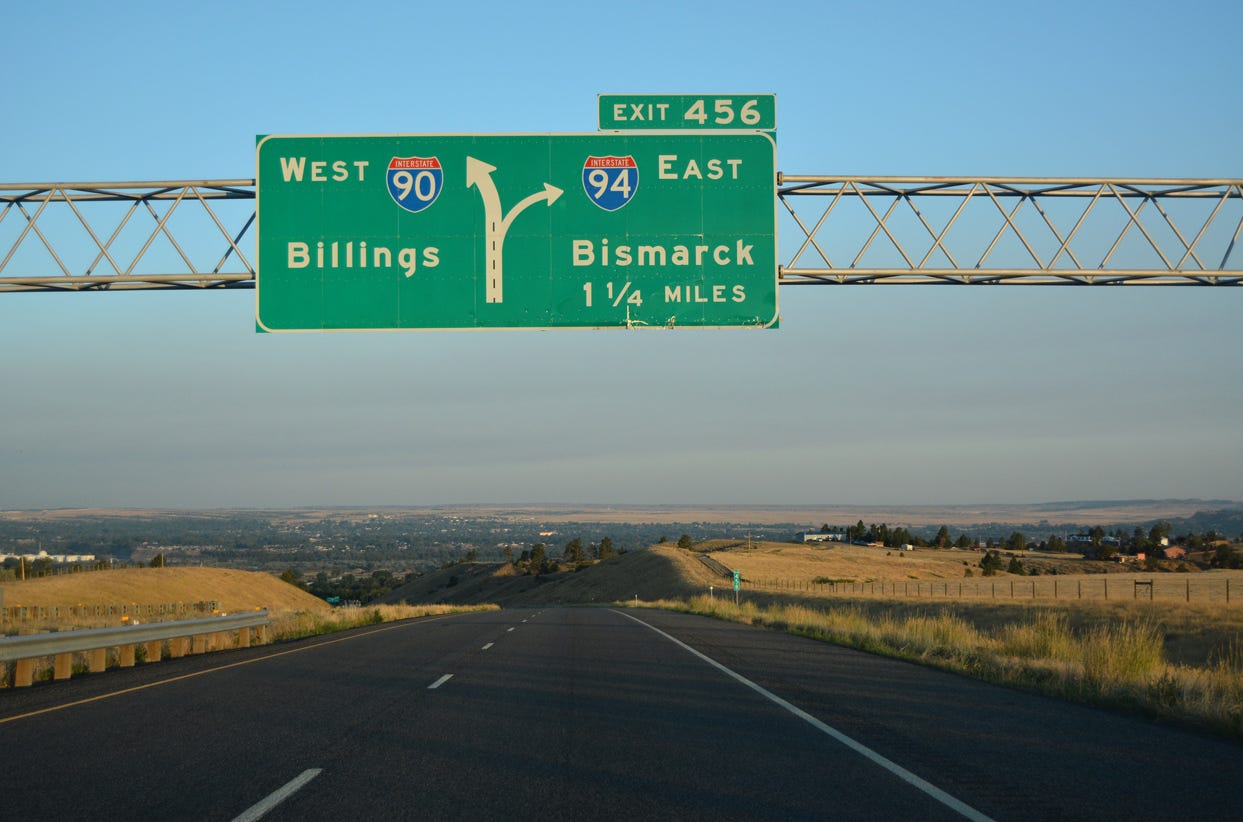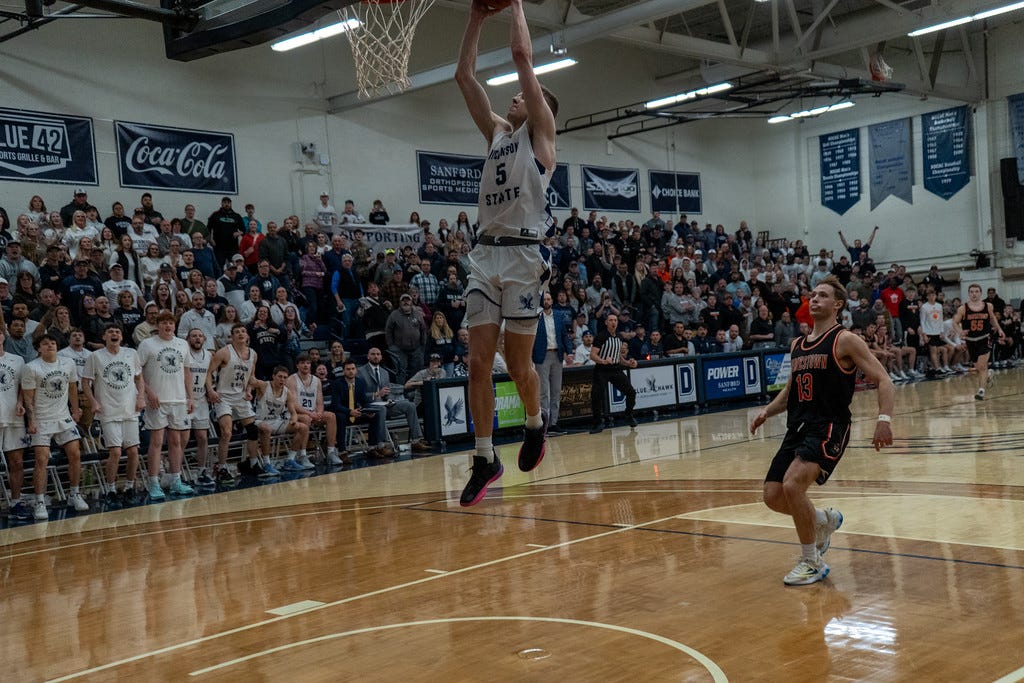It is funny looking back on my initial discovery of the Frontier Conference as an introduction to the NAIA and where things have headed in that short time.
And I realize that the subtitle is somewhat misused as the phrase uses distance in a more temporal sense than geographic, but what is English if not a language to mold as one sees fit?
In some ways it seems odd that I am as happy and excited to see the Frontier expand as I am having expressed a fondness for conferences with small geographic footprints, but this is a situation quite dissimilar to the geographic abominations of the Big Ten and ACC that have occurred in recent years.
How Did We Get Here?
As this academic year nears its end, the Frontier sits as a group of 6 schools in the state of Montana - strong and stable, but on the knife’s edge of having postseason automatic qualifiers with a limited selection of sponsored sports and a very difficult path towards growing their sports offerings without expansion.
The private schools of the group - Carroll College, Rocky Mountain College, and the University of Providence - do field teams outside of the Frontier such as Softball and Soccer, but the public universities of Montana Western, Montana Tech, and MSU-Northern were unlikely to find support to grow their offerings in lockstep against the budget of the state to allow the Frontier to sponsor another sport themselves.
But to the east, the light of the North Star was dwindling, through no fault of the conference, as member schools closed while Waldorf and Viterbo - who were already on the geographic fringes of the NSAA - chose to jump ship at first sign of a life raft, leaving the faithful with only 5 schools and 4 football programs.
It was clear that the conference would need to disband at this point, but they were able to take advantage of the Jamestown Jimmies’ gap year in limbo between the GPAC (NAIA) and NSIC (NCAA) to play a respectable year of team sports.
And so, in a slightly draw-out process, the North Star 5 would officially announce on May 21, 2024 that they would all be joining the Frontier Conference for Fall 2025 to nearly double their membership in one fell swoop.
But there was an odd piece of miscommunication regarding the keystone of their bridge to the future - Bismarck State College of the Mon-Dak Athletic Conference, a part of the NJCAA.
The issue stemmed from the NAIA quietly announcing that Bismarck State had been approved for NAIA membership along with an application to the Frontier Conference.
This seemed simple enough until the joining announcement of the North Star 5 where any mention of Bismarck State was glossed over with the note that their transition was not set in stone and any announcement would come on Bismarck’s timetable.
But finally, on October 24, 2024, Bismarck State College would announce their transition from the NJCAA to the NAIA, relieving any concerns that they would not be able to compete in the Frontier for the 2025/26 athletic year.
In the meantime, Simpson University was also added as a football associate member, bringing their total football membership to an impressive 14 spanning from southeast South Dakota to Northern California/Southern Oregon and down to the greater Phoenix region of Arizona.
So let's refresh with an aggregate list of member institutions:
Montana Western Bulldogs - Dillon, MT
Carroll College Fighting Saints - Helena, MT
Montana Tech Orediggers - Butte, MT
Montana State-Northern Lights & Skylights - Havre, MT
University of Providence Argonauts - Great Falls, MT
Rocky Mountain College Battlin’ Bears - Billings, MT
Dickinson State Blue Hawks - Dickinson, ND
Bismarck State Mystics - Bismarck, ND
Valley City State Vikings - Valley City, ND
Mayville State Comets - Mayville, ND
Dakota State Trojans - Madison, SD
Bellevue Bruins - Bellevue, NE
Football Affiliate Members:
College of Idaho Yotes - Caldwell, ID
Eastern Oregon Mountaineers - La Grande, OR
Southern Oregon Raiders - Ashland, OR
Simpson Red Hawks - Redding, CA
Arizona Christian Firestorm - Glendale, AZ
For an NAIA conference, the Frontier is tilted towards public universities more than anyone else, and although these are small schools, variance in enrollment has been fairly flat and combined with being located in states with a better birth rate than most and recent investment in facilities, there's a sense of stability and commitment to athletics for the conference looking forward.
Coming Changes
The primary advantage to a single conference growing to this size are the gains in automatic qualifier bids to the NAIA postseason.
While 6 is the baseline for most sports to receive a single bid, a second automatic qualifier is generally awarded at 10 members while football requires a total of 12 members sorted in divisions of 6 or more.
So the 2025 season will feel very different.
I will talk about the 2025 football season at a later date, so what about Basketball?
We won't know for sure until the 2025/26 schedule is released, but I believe this inaugural season of the expanded conference will see the two sides play a slightly geographically tilted slate to cut down on travel as well as likely fulfilling some preexisting out-of-conference obligations that were signed before the dissolution of the North Star.
But how to handle the conference tournament?
With 2 automatic qualifiers, those generally go to the two teams who make the conference championship game, but in recent years the Frontier has played a single-site tournament in Great Falls that involves both the Men's and Women's side. This isn't feasible in a 12-team world, so what's the solution?
Seeing the electric crowd at Dickinson State for their NSAA MBB Championship, it would seem that utilizing campus sites is a very attractive solution in the future, but how to manage cost?
Nobody wants to deal with the possibility of Montana Western playing Bellevue on short notice at this juncture, so I think the best course of action may be to operate separate East and West 6-team brackets at campus sites with a championship game between the two automatic qualifiers at the end.
This would be a single year’s transitional model ahead of 2026/27 which will hopefully have a full double round-robin conference schedule.
One possible solution at that point is to give byes to the top 4 seeds then pair the bottom 8 into geographic matchups before seeding 5-8 for the remainder of the tournament. It is preferable to maintain a tournament that involves all members to keep all teams motivated through the end of the season.
To try and project this past season into that model for Men's Basketball we would see Montana Tech, Dickinson State, Providence, and Carroll College receive first round byes and host the second round. The first round would see Montana Western host MSU-Northern, Rocky Mountain host Bismarck State, Mayville State host Valley City State, and Bellevue host Dakota State.
The second round could still see excessive travel, but I would enjoy seeing a bit more energy from the crowd than what has been shown in the Frontier's neutral site tournament.
It may be feasible to move that second round and onward to a neutral site that is more centrally located, but a total of 16 squads would still not be a perfect solution.
Moving on to other sports, I don't know enough about Women's Volleyball to speak on any impending changes, but the most important change immediately introduced by expansion will be the ability of the Frontier to now sponsor Baseball and Softball.
With all 6 of the incoming members playing Softball, the Frontier will jump to 8 members in the sport as Carroll and Providence have been playing as affiliate members of the Cascade Collegiate Conference. This will give the programs an easy path to 28 conference games.
There is also the possibility of adding a 9th program as Rocky Mountain College renovated the on-campus Urbaska Field from its previous existence as a baseball facility into a softball field, though currently it is being used by Billings Central Catholic High School and nothing has been announced by Rocky Mountain College regarding starting a Softball program.
As for Baseball, the 6 new schools make up the entirety of the baseball programs for the Frontier, which is the area where the addition of Bismarck State was most vital.
Without the Mystics, Baseball would not be viable for the Frontier and the North Star 5 would have needed to find a home for their programs as affiliate members. This would have added administrative and travel expenses that would have further burdened the programs.
It will be great to have stronger Frontier Conference representation into the Spring semester of athletics, and hopefully more of the Montana schools can add Baseball and Softball on a timetable that works for them and not forced into a group project.
There are also plans for the conference to add Competitive Cheer & Dance to my knowledge, and growing Men’s & Women's Wrestling to the point of sponsorship would be great to see as well.
While I can foresee changes in Football membership in future years, there's no reason to expect any additional full members to join the conference unless Dakota State or Bellevue were to leave for one reason or another.
I feel for those who would rather return to the days of the Dakota Athletic Conference, but it is important to remember that this was not a hostile takeover or strategic dismantling in any way. Instead, this shift is mutually beneficial and should improve the perception of all members with time.
There may be concerns about the total number of member institutions in the NAIA, but the quality of play at the top is on an upward trajectory and improvements to viewing access will hopefully capture a larger audience moving forward.
The King is Dead, Long Live the King!





